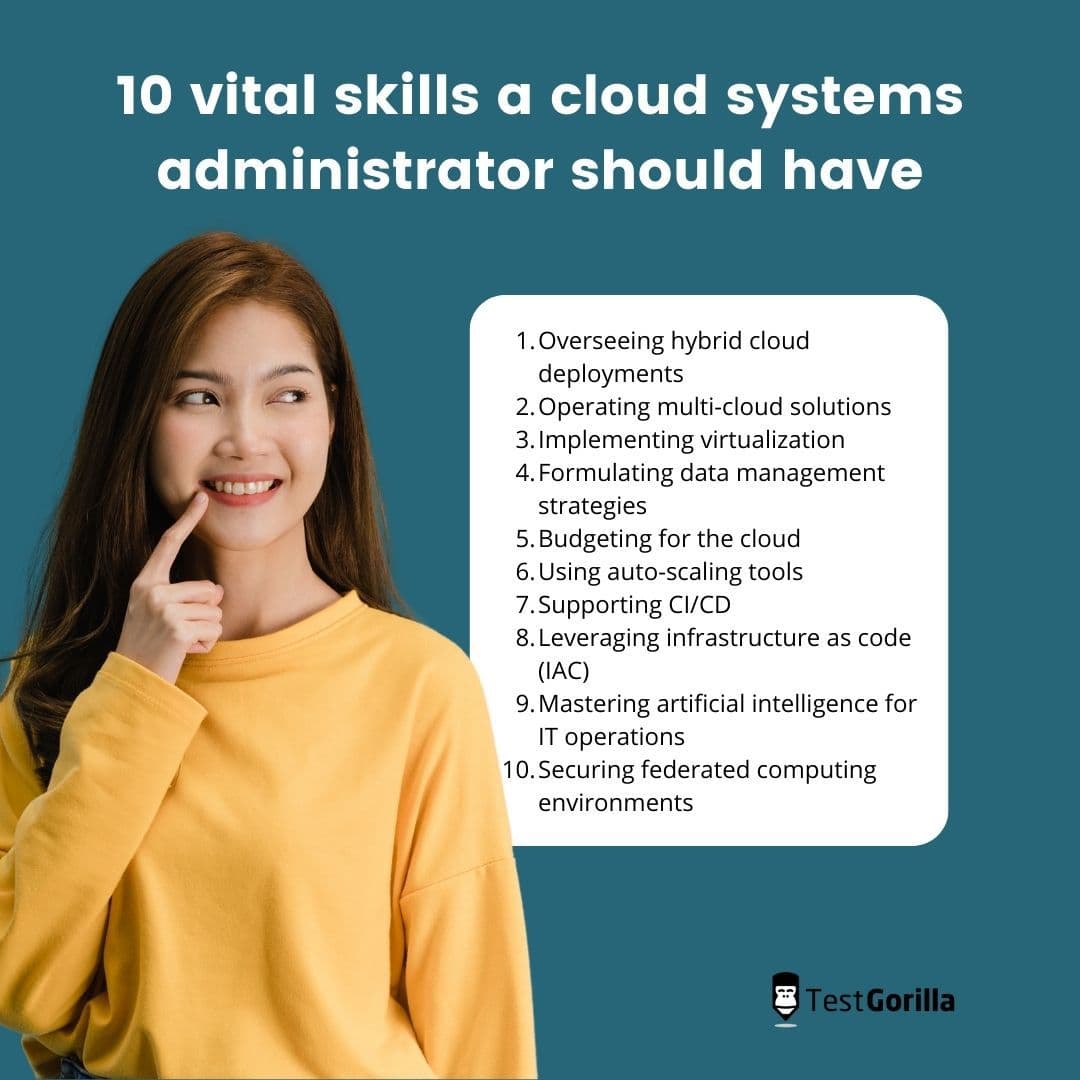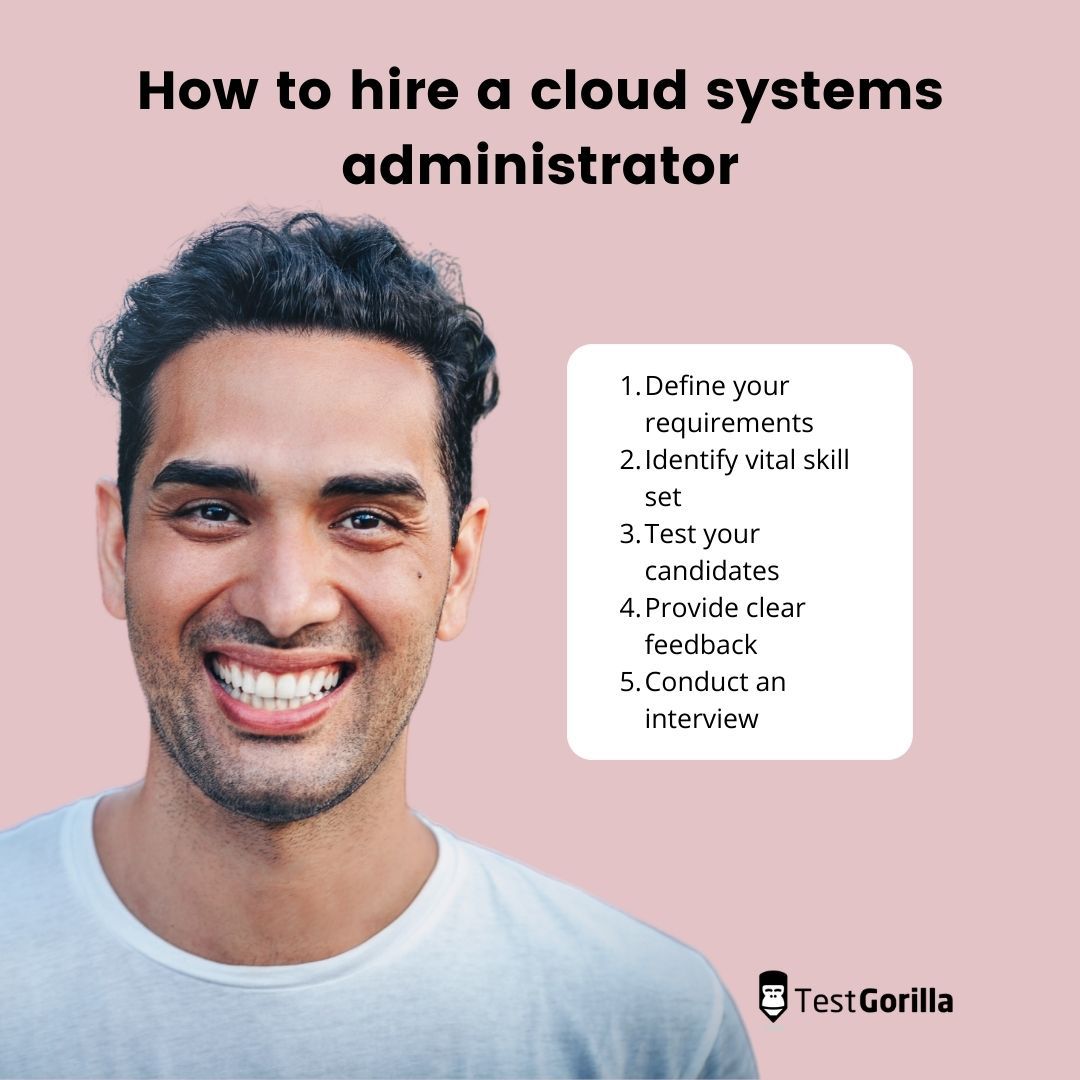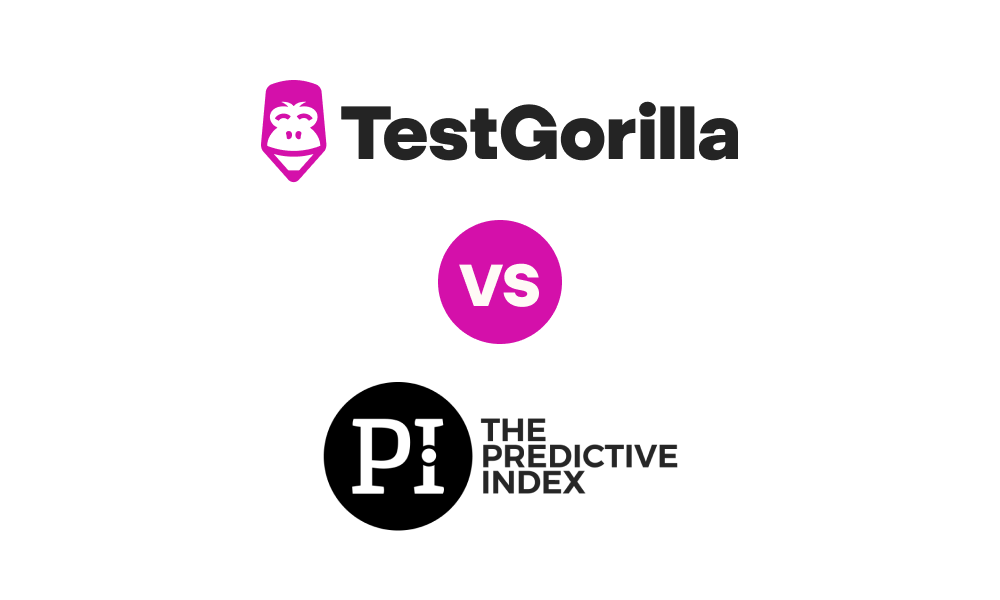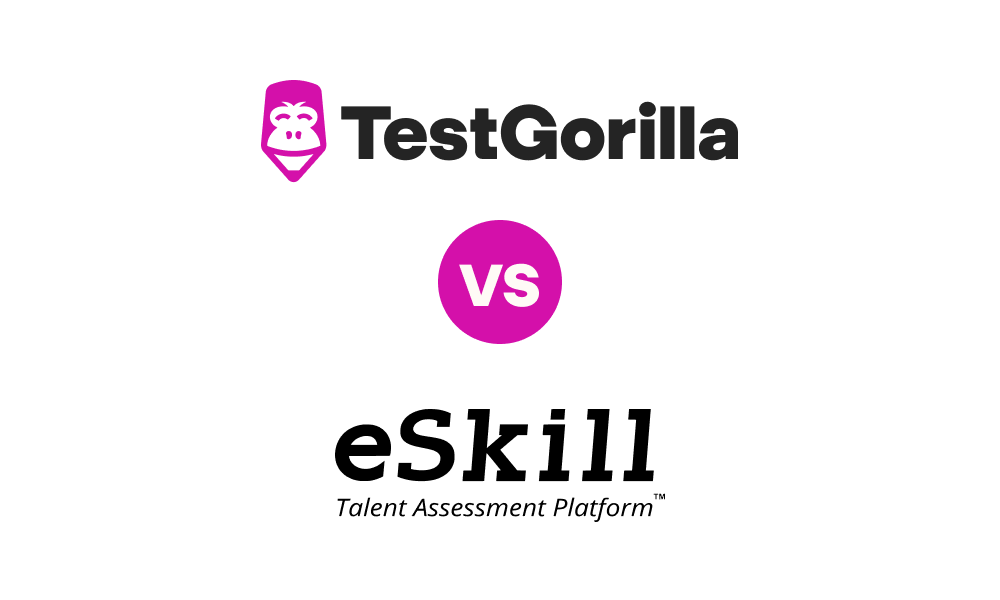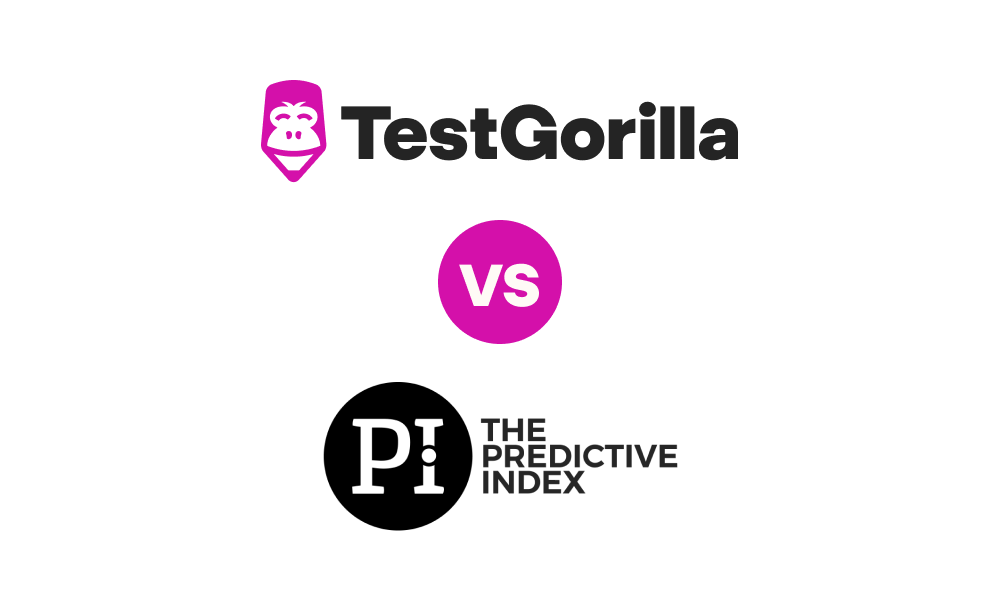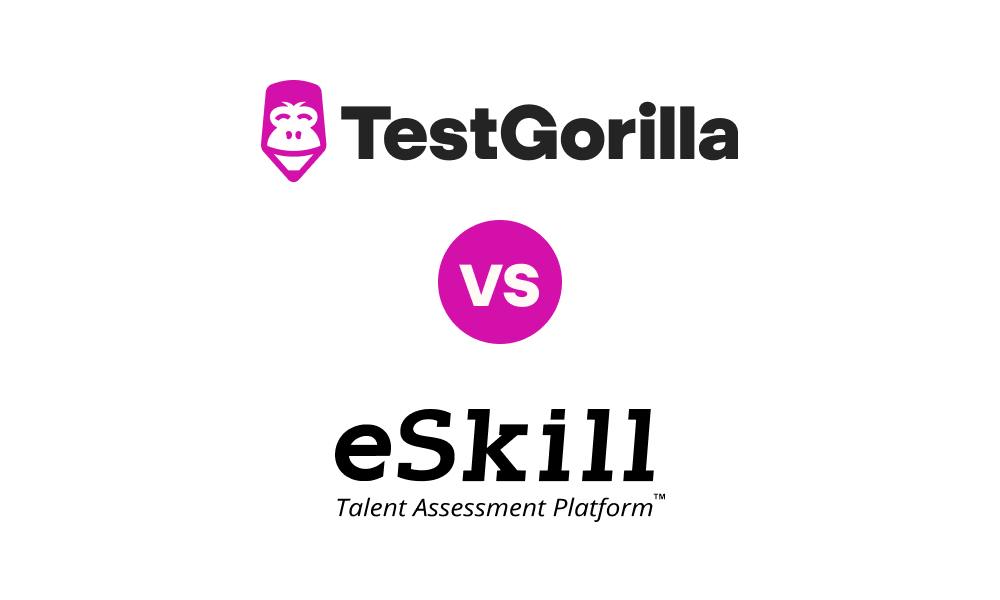Almost all companies today rely on computers and networks for their operations. The importance of a good, reliable, well-structured computer framework cannot be estimated for building a great organization.
Cloud systems administrators oversee companies’ systems, upgrade system optimization, and troubleshoot computer software and hardware.
Because computing systems enhance company performance, it’s crucial to recruit a team of cloud systems professionals with the necessary technical and soft skills to fit your company’s needs and keep the organization running smoothly.
This will explore the role of cloud systems administrators, including their duties and required skills. It will also explain the best approach to hiring a top professional and explore TestGorilla’s Cloud Systems Administrator test to recruit the best candidates.
Table of contents
What is a cloud systems administrator?
A cloud systems administrator is a professional who works, manages, and maintains a multi-user computing environment for an organization. Experts in this role have a broad technical understanding of IaaS, PaaS, and SaaS and balance their tasks effectively.
Cloud systems administrators use their skills to develop, configure, implement, and manage all systems within a specific cloud platform. They establish and execute cloud operations based on specs and parameters and select appropriate cloud providers.
What does a cloud systems administrator do?
Besides primary duties, here are some other activities that cloud systems administrators engage in:
Work with the IT department to create, administer, and maintain public or private cloud, Windows, or Unix systems
Manage multiple cloud servers
Provide technical support on cloud-based systems and solve operational issues
Install and configure the Windows OS in cloud IaaS providers
Compare, examine, and integrate new technology systems into the desired environment
Help maintain system security strategies and guidelines
10 vital skills a cloud systems administrator should have
Familiarizing yourself with these skills will help you to pay attention to the right qualities throughout the recruitment process.
Below are ten important abilities that a cloud systems administrator needs in today’s world:
1. Overseeing hybrid cloud deployments
Hybrid infrastructures became more popular in 2021 as organizations started using them to balance security and compliance with on-demand access. A good example is when firms host meetings on both private systems and cloud-based platforms.
Hybrid infrastructure refers to the co-existence of private and public clouds, where the administrator can share workloads across private frameworks on-site and public cloud resources.
A cloud systems administrator should have sufficient skills to oversee both frameworks, deploy private, on-premise systems to the company’s cloud-based platform, and develop the app to ensure a smooth hybrid operation.
2. Operating multi-cloud solutions
More organizations now adopt multi-cloud infrastructures. Some reports show that its use will continually rise due to its flexible framework that allows users to choose their hosting location and avoid downtime.
Using multi-cloud infrastructures can be complex since they can be public, private, or hybrid. Cloud systems administrators must have sufficient knowledge of multi-clouds, such as understanding how to include basic data services.
3. Implementing virtualization
Virtualization is another important skill with a sporadic increase in utility. It refers to using on-premise servers for hosting virtual servers and networking devices to optimize resources.
Many organizations virtualize their data, network, and app hosting environments to improve business continuity prospects.
As such, cloud systems administrators need to understand the fundamentals of key virtualization enablers to remain up-to-date with industry trends. Hyper-V, VMware, and Kernel Virtual Machine (KVM) are common enablers.
4. Formulating data management strategies
Due to the COVID-19 pandemic, the tech landscape now requires cloud systems that provide the best data insights for decision-making.
Cloud systems administrators should know how to devise data management strategies via database-as-a-service tools and non-relational data stores while strategizing the best methods for analyzing big data and maintaining backups.
5. Budgeting for the cloud
The steady dependency on cloud systems poses a high risk of budget overruns for organizations. Companies need to check costs and maintain returns while virtualizing their network infrastructures.
To secure the best cloud systems’ ROI, administrators need excellent budgeting skills and knowledge of pricing models for different vendors. A good instance is pricing serverless functions against cloud VMs. You can assess these skills with a reliable budgeting test.
6. Using auto-scaling tools
With an increase in remote work environments, teams need a good IT workspace while leveraging artificial intelligence for resource scaling and orchestration automation. Common public cloud services provide auto-scaling and virtualization tools for use.
Cloud systems administrators must know enough about several auto-scaling tools and their distinctive functions. Here are three basic auto-scaling tools and their features:
Scheduled auto-scaling tools which set a maximum number of instances or CPU usage to stop new instance creation once reached
Predictive auto-scaling tools which predict the required instances to manage a workload at any period
Dynamic auto-scaling tools which formulate instances based on target metrics
7. Supporting CI/CD
Continuous integration and continuous deployment (CI/CD) pipelines help enable cloud migration at a cheaper cost for your organization and lower cybersecurity problems.
These core cloud migration components ensure that companies can always adapt to an ever-changing global environment. Cloud administrators should understand the tools and operations so they can analyze company requirements and revert accordingly.
8. Leveraging infrastructure as code (IAC)
IAC allows users to oversee cloud infrastructure with configuration files rather than manually. Due to fewer manual efforts, it cuts IT management costs and boosts scalability.
Administrators must remain proficient in IAC by practicing with tools like AWS Cloud Formation or Azure Resource Manager. These skills help optimize deployments and automated operations, among other functions.
9. Mastering artificial intelligence for IT operations
Artificial intelligence for IT operations (AIOps) uses AI analytics to transcend old reactive IT systems monitoring to proactive tracking and issue resolution. AIOps enables users to handle complicated cloud infrastructure and examine data from several systems.
A cloud systems administrator must harness the power of AIOps to track signals of prospective downtime, commence automated remedial procedures, and other operations that can reduce the workload.
10. Securing federated computing environments
In a post-COVID world, physical security protocols have become less relevant because of fewer physical offices and more remote work environments. Instead, the heterogenous IT framework requires a corresponding heterogeneous security strategy.
Cloud systems administrators must be adequately skilled in securing a federated computing environment that can centrally govern its various apps and resources.
How to hire a cloud systems administrator
Having explored the skills required of a cloud systems administrator, let’s look at the five steps to secure the best developers for your organization:
1. Define your requirements
The first step to hiring top developers is recognizing and determining the position’s prerequisites. Prepare a job profile and describe the ideal professional for the role. You can use a job description template to outline these requirements more effectively.
2. Identify vital skill set
After figuring out the prerequisites and posting the job opening, the next step is to find candidates who match the profile. You can then book a physical or virtual appointment to screen and test them.
3. Test your candidates
Examining candidates in the pre-screening stage is a practical way to discover if applicants suit your organization’s needs. A quality test platform like TestGorilla allows you to evaluate candidates’ developer skills in practical scenarios.
Assessments like this analyze a candidate’s skill and engagement levels. They also help you recognize the most innovative candidates when faced with unfamiliar tools.
4. Provide clear feedback
After the pre-employment test, give your candidates feedback based on their test results. Results analysis helps you identify potential employees’ strengths and weaknesses and can inform other candidates on areas of improvement.
5. Conduct an interview
The final step is interviewing your candidates to determine if those shortlisted match your company culture. You should remember to prepare relevant questions or use sample interview questions.
We’ve put together a list of Linux administrator interview questions and Linux commands interview questions to get you started.
Start your cloud system administration test
Use TestGorilla’s Cloud System Administration test to analyze candidates’ skills in Windows and Linux systems and their basic understanding of cloud systems like AWS and Azure.
This assessment is best for examining mid- to senior-level cloud systems administrators.
It depicts how well candidates can install, configure, and maintain computer systems and networks. This systems administration test focuses on the daily tasks that a typical cloud administrator oversees and examines candidates’ practical abilities and knowledge.
Candidates who perform well in this assessment are sufficiently skilled in organizing and managing networking systems. Furthermore, they can identify, interpret, and solve user problems from the company network while providing support for cloud infrastructure.
Sign up to TestGorilla today to get the best and most affordable pre-screening assessment for your organization.
Related posts
Hire the best candidates with TestGorilla
Create pre-employment assessments in minutes to screen candidates, save time, and hire the best talent.
Latest posts
The best advice in pre-employment testing, in your inbox.
No spam. Unsubscribe at any time.

Hire the best. No bias. No stress.
Our screening tests identify the best candidates and make your hiring decisions faster, easier, and bias-free.
Free resources
This checklist covers key features you should look for when choosing a skills testing platform
This resource will help you develop an onboarding checklist for new hires.
How to assess your candidates' attention to detail.
Learn how to get human resources certified through HRCI or SHRM.
Learn how you can improve the level of talent at your company.
Learn how CapitalT reduced hiring bias with online skills assessments.
Learn how to make the resume process more efficient and more effective.
Improve your hiring strategy with these 7 critical recruitment metrics.
Learn how Sukhi decreased time spent reviewing resumes by 83%!
Hire more efficiently with these hacks that 99% of recruiters aren't using.
Make a business case for diversity and inclusion initiatives with this data.


